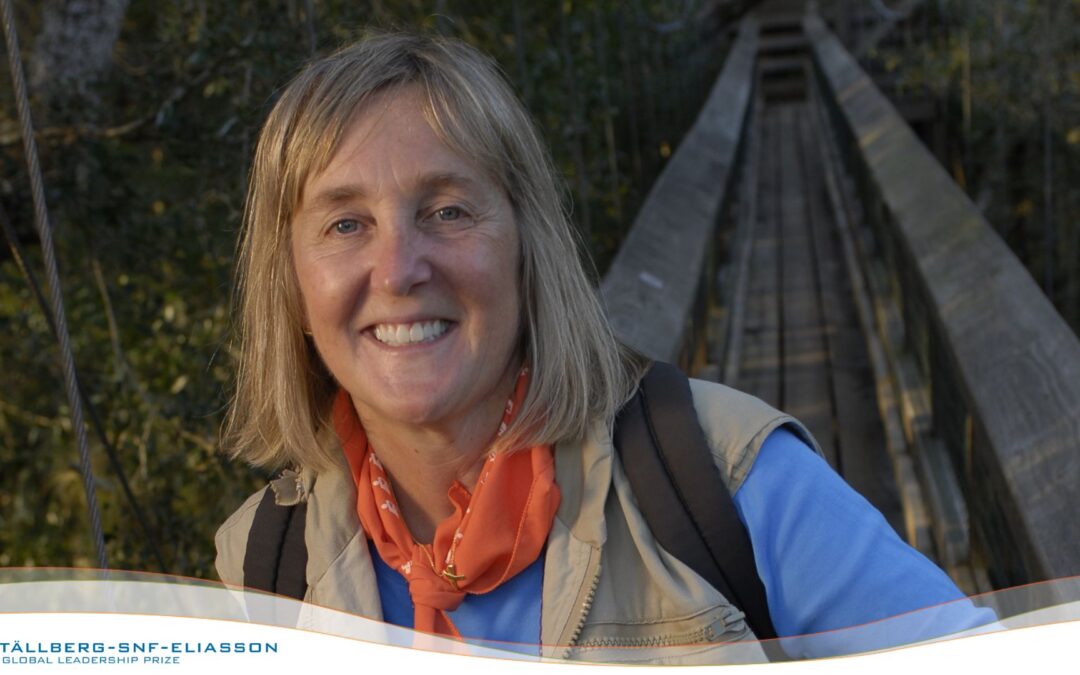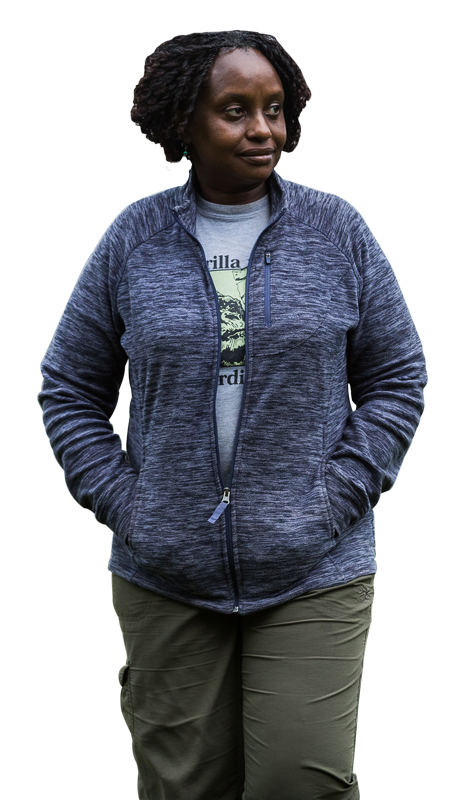Meet the Winners: Dr. Meg Lowman
Dr. Meg Lowman, a Winner of the 2023 Tällberg-SNF-Eliasson Global Leadership Prize, has a vision of a world where people and nature live in harmony, where trees are valued and protected, and where everyone has the opportunity to explore and learn from the natural world.
Dr. Lowman loves trees. She loves them so much that she has devoted her life to exploring and saving them. She is an arbornaut, a real-life Lorax, and an Einstein of the treetops. She is also a scientist, an explorer, a conservationist, a mentor, a storyteller, an educator, and a visionary leader. Her life is a remarkable journey of discovery, adventure, and inspiration.
“My passion for science and exploration began as a little girl and subsequently defined my life’s work,” says Dr. Lowman known as “Canopy Meg” to friends. “I became a pioneer in the field of forest canopy science and am now considered one of the world’s first “arbornauts” or explorers of the canopies.”
Born with a curiosity for nature and a love for trees, even as a child she dreamed of exploring the mysterious world of the forest canopy some call the “eighth continent” covering more than half of the planet’s land surface. She pursued her passion for science and became a pioneer and leader in the field of forest canopy research, designing innovative methods and tools to access and study the treetops with their rich biodiversity and keys to ecosystem sustainability.
“UNLESS SOMEONE LIKE YOU CARES A WHOLE AWFUL LOT,
NOTHING IS GOING TO GET BETTER. IT’S NOT.DR. SEUSS, THE LORAX
Lowman revels in having had the opportunity to launch a new science. “I designed hot-air balloons and walkways for treetop exploration to solve mysteries in the world’s forests, especially insect pests and ecosystem health. I now leverage my international network and exploration, seeking best practices to solve environmental challenges.”
The nickname “Canopy Meg” was bestowed by oceanographer Bob Ballard of Titanic fame when he and Lowman were co-chief scientists for the Jason Project. That innovative program reached millions of middle-school kids with virtual expeditions around the world aiming to inspire kids about science, from the top of the canopy to the bottom of the ocean.
I did not aspire to be Einstein and I never thought of becoming somebody who would make a brand-new discovery. I really just love trees. So, when my graduate school advisor in Australia said, ‘If you want to study trees, you have to study the whole tree, not just the bottom like everybody else,’ I made a simple slingshot out of a piece of metal. Then I got a string and practiced rigging a branch. Next, I borrowed a climbing rope from the caving club and sewed my own harness with a borrowed sewing machine. So up I went, having no idea that everything was up there: 50% of the biodiversity on the planet! It totally changed my life to realize that not only had I actually developed a toolkit for a new field of science, but up there were all of these important things like medicines and pollinators and other activities that we never saw looking up from the ground.”
Over the years “Canopy Meg” has worked in more than 40 countries on six continents, conducting groundbreaking research and conservation projects in some of Earth’s most remote and endangered forests. She has co-chaired five international canopy conferences and authored over 200 scientific publications and ten books on forest science and sustainability. Her first book, “Life in the Treetops,” earned a cover review in the New York Times Sunday Book Review. She has also been awarded a Fulbright Senior Specialist Scholar to both India and Ethiopia and has had an asteroid named after her—16304 Lowman—by American astronomer Carolyn Shoemaker.
But Dr. Lowman is most at home in a forest canopy. “I feel excited to be on the cutting edge of exploring what Mother Nature has brought us. I guess I’ve had enough training to realize that the machinery of the natural parts of the planet is really what will configure the health of the future. And somehow humans…are missing this fact about our ecosystem. So that drives me more to not only explore it–and yes, get leach bites and get overheated–but then to bring the stories home and hopefully tell them to people who can help make a difference.”
Since receiving her Ph.D. in 1983, Lowman has built a career that stretches from an Australian Merino sheep farm through world-class botanical gardens, museums, and academia. In 2019 she launched Mission Green working in partnership with the Tree Foundation “to promote global tree conservation, sustainable economic opportunity for local indigenous people, and continuous research and education.” She and her colleagues aim at nothing less than stopping global deforestation of primary forests.
“We need timber, we need logging policies for sure, but we don’t need to do it at the expense of our heritage. 50% of the big trees in the world have been cut down in my lifetime, and that’s an embarrassing statistic. Embarrassing for researchers and embarrassing for countries that have stewardship activities allegedly to protect them,” she insists. “It’s not good enough to plant a seedling and replace a big tree…the big trees are the giant condominiums that house all the species. You can’t put a koala in a seedling; you have to grow back those eucalypts that have been cleared or burned.”
A key element of Canopy Meg’s leadership is education and advocacy. She has trained and mentored thousands of students in sustainability and forest stewardship. More importantly, she wants to get kids away from their computer screens and up in the trees. “My personal mantra is, ‘No child left indoors.’ If kids go out into nature and climb a tree or get pulled up to the canopy in a harness or just hug a tree trunk…that it’s a joyful experience. When people experience excitement about the forest, then hopefully they will be inspired to become supporters of saving the trees.”
A lot of Lowman’s work today aims to create access to the canopy. She points to the collaboration she developed with business leader Harry Cockrell in Malaysia to create the Malaysian Walkway in Penang Island, Malaysia—dubbed the Penang Hill Biosphere Reserve and officially designated a UNESCO World Heritage Site. The installation not only gives ordinary people as well as scientists access to the canopy, but also helps to grow and revitalize the rainforest with its immense biodiversity.
When people…learn the importance of a tree and the value of a tree, they change their behavior. And I just hope we can continue to do that in bigger and better ways.”


